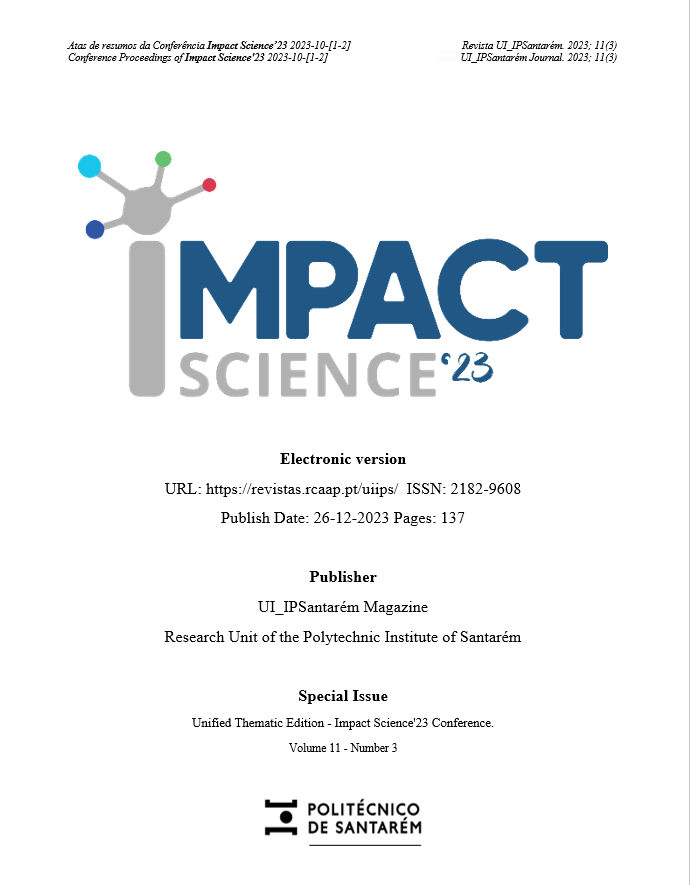Salmonella in the poultry sector
DOI:
https://doi.org/10.25746/ruiips.v11.i3.32524Keywords:
zoonoses; aviculture; food security; One HealthAbstract
Introduction: Salmonellosis is the second most common gastrointestinal infection in humans and is an important cause of outbreaks in the European Union, mostly of foodborne origin associated largely with the consumption of poultry meat and eggs. Portugal, in line with EU guidelines, implements the National Salmonella Control Programmes (NSCPs) with the aim of reducing the prevalence of Salmonella in poultry and food and thus promoting food safety at all stages of production. The aim of this study was to identify the impact of the NSCPs of the Lisbon and Tagus Valley Region in the period 2015 to 2019.
Methodology: A descriptive statistical analysis of the epidemiological data provided by the Directorate of Food and Veterinary Services of Lisbon and Tagus Valley (DFVS-LTV) was used regarding the cases of salmonella notified under the NSCPs of serotypes relevant to animal and human health.
Results: An average of 666 samples were collected annually under the NSCPs (a total of 3167 samples for the period under review). In 2019, the development of collaboration protocols with the veterinarians responsible for the farms allowed the number of samples to be maintained despite the restrictions imposed by the pandemic. Of all the samples that tested positive for Salmonella sp, it was found that, after serotyping, 67.3% were positive for the vaccine strain. For the period analysed, 46 cases of Salmonella serotypes relevant to animal and human health were officially notified. The average annual notification rate was 9.2%, a low figure and with a decreasing evolution (although discreet) allowing the fulfilment of the indicators required at Community level. It was noted that most of the official notifications result from self-monitoring samples.
Discussion of Results: The successful implementation of the NSCPs have contributed to the reduction of relevant salmonellae in the region, which may be related to the efficiency of the implementation of the programmes, the high specialisation of the sector, the greater awareness of producers to comply with biosafety measures and the excellent synergy between producers and the DGAV, which has a constructive, participatory and not merely supervisory role. Serotyping is an essential procedure since it allows false positives to be traced, the immune status of flocks to be identified and the epidemiological evolution of Salmonella sp. serotypes to be identified.
Conclusion: It is not possible to know the epidemiological evolution of Salmonella sp in the poultry sector if there were no NSCPs, however, their implementation has been positive and their contribution to food safety cannot be dissociated. To meet the challenges of an increasingly globalised world, it is necessary to develop a collaborative and multidisciplinary synergy: the One Health concept, so it would be pertinent in the future to understand the impact of these programmes on Public Health.
Downloads
Published
How to Cite
Issue
Section
License
Copyright (c) 2023 Patrícia Simão, Claúdia Moedas, Veronica Duarte

This work is licensed under a Creative Commons Attribution-NonCommercial-NoDerivatives 4.0 International License.
Authors publishing in this journal agree to the following terms:
Authors retain copyright and grant the journal the right of first publication, with the article simultaneously licensed under the Creative Commons Attribution License that allows sharing of the work with acknowledgement of authorship and initial publication in this journal.
Authors are permitted to enter into additional contracts separately for non-exclusive distribution of the version of the article published in this journal (e.g., publish in an institutional repository or as a book chapter), with acknowledgment of authorship and initial publication in this journal.
Authors have permission and are encouraged to publish and distribute their work online (e.g., in institutional repositories or on their personal webpage) at any point before or during the editorial process, as this may generate productive changes, as well as increase the impact and citation of the published work.



